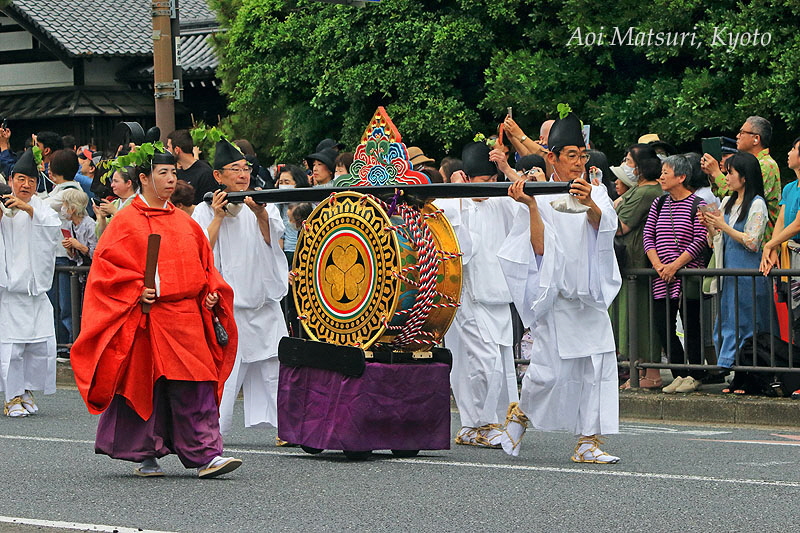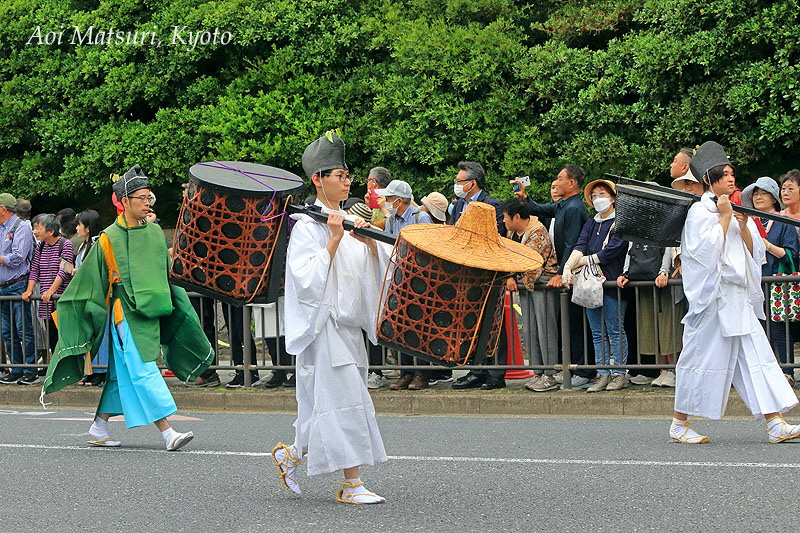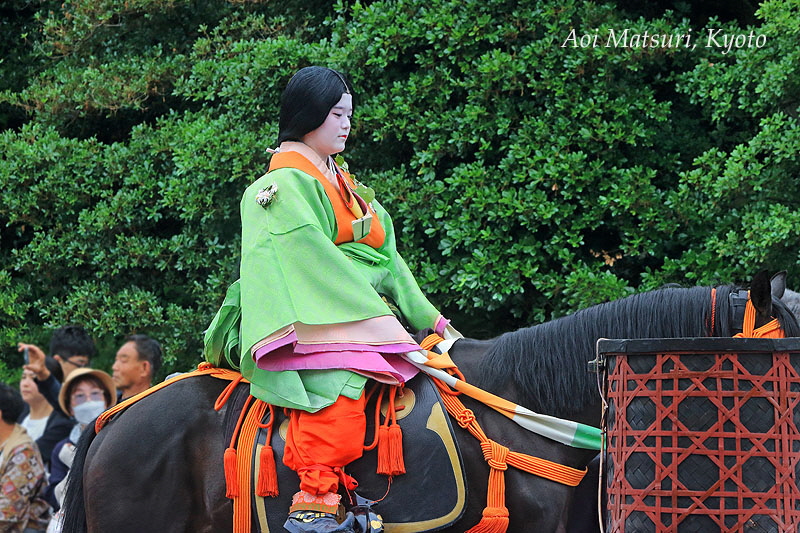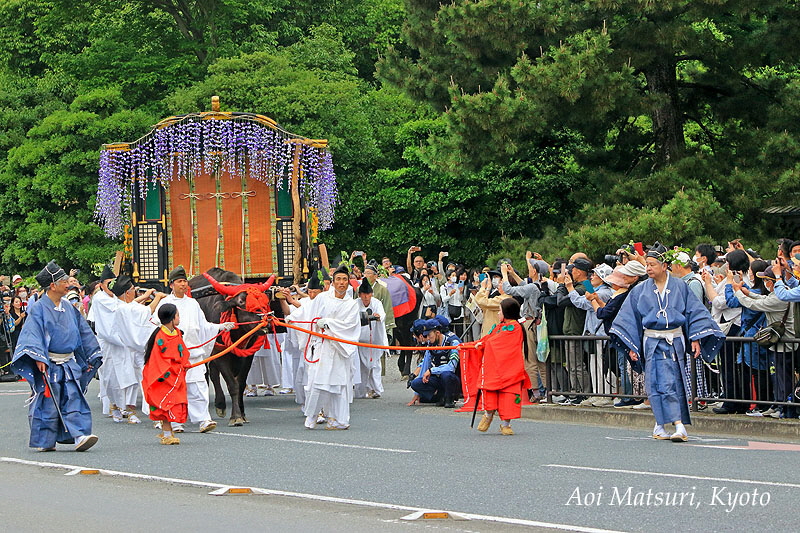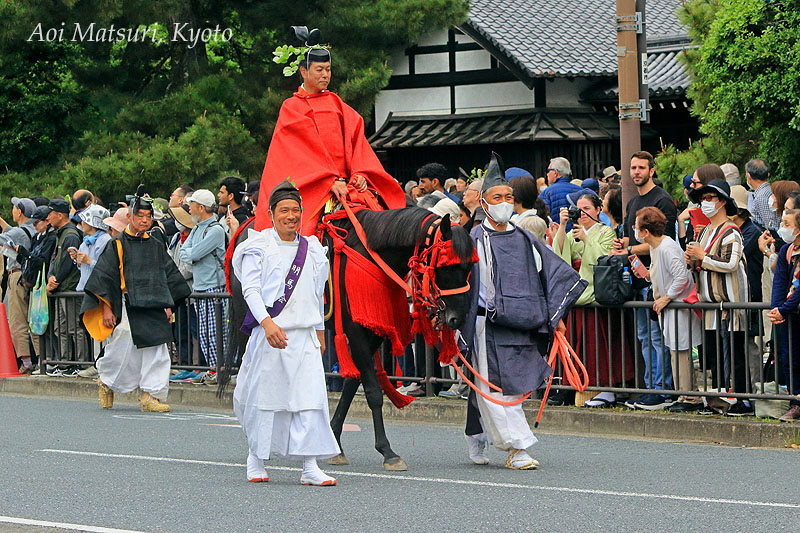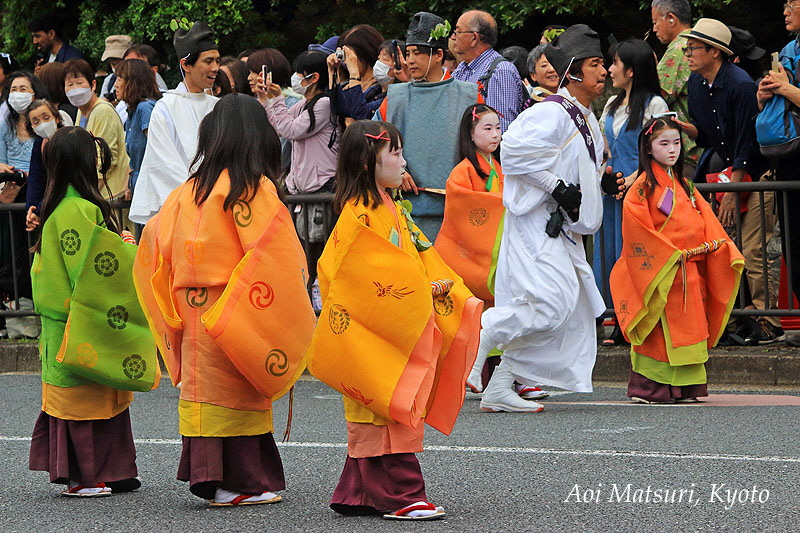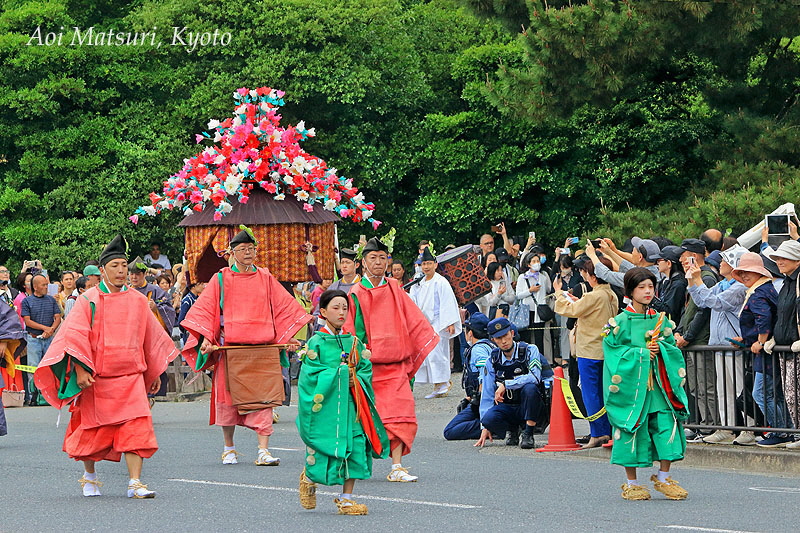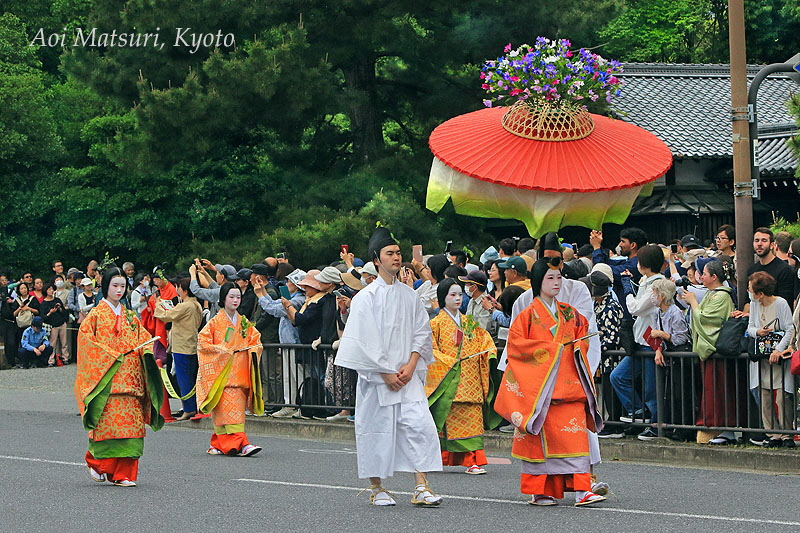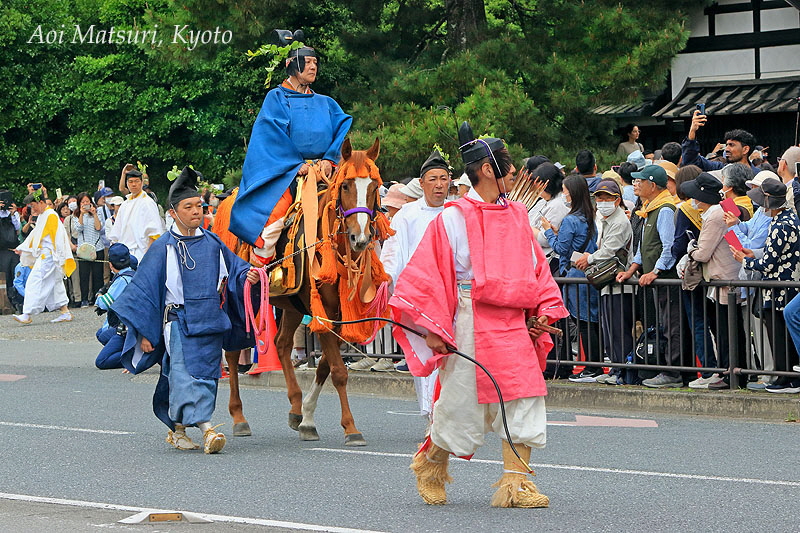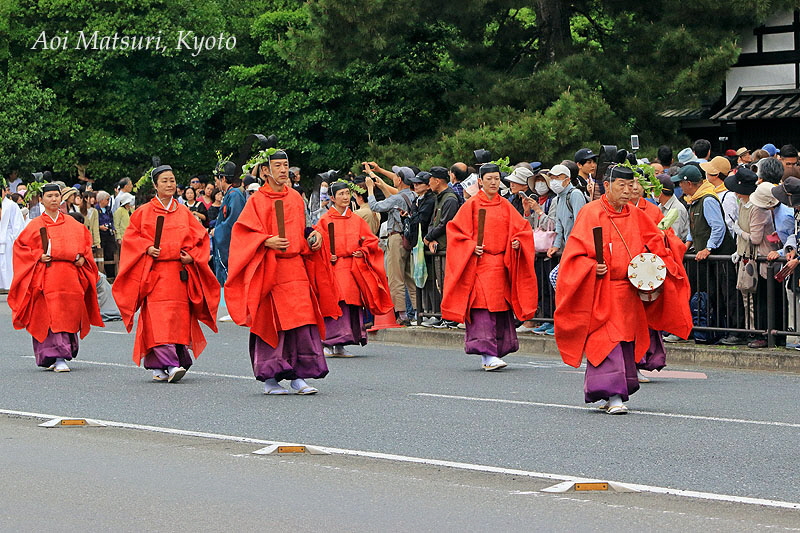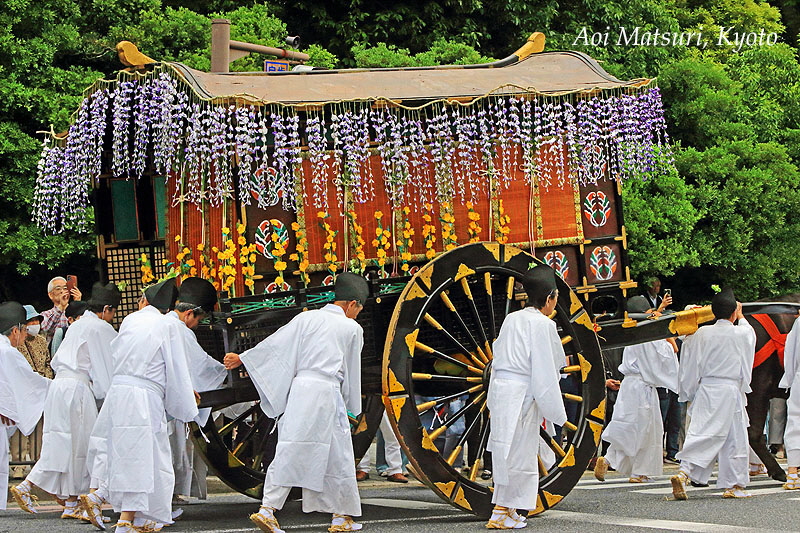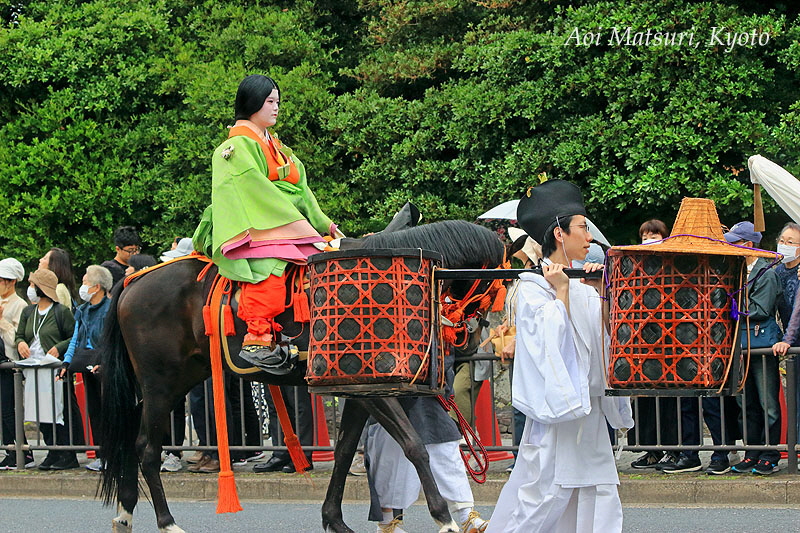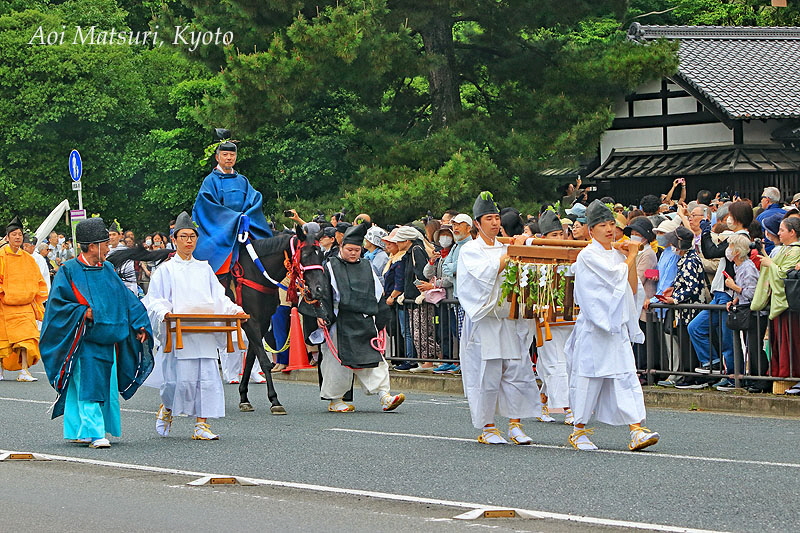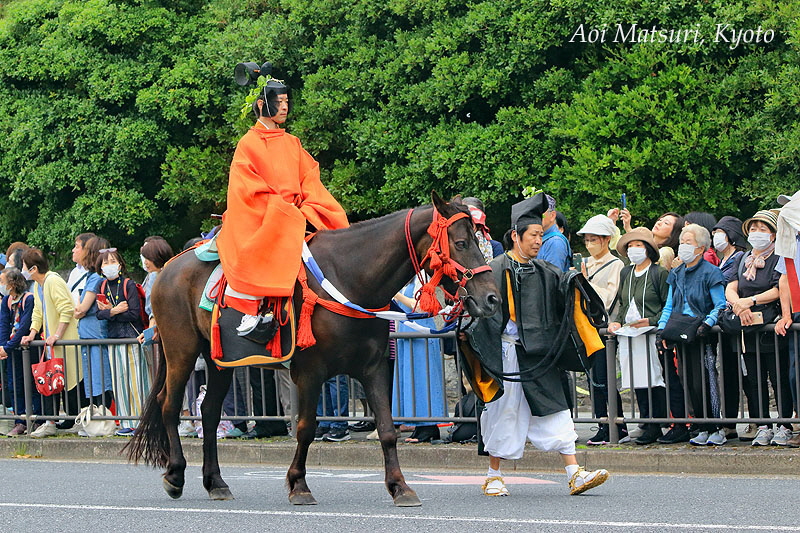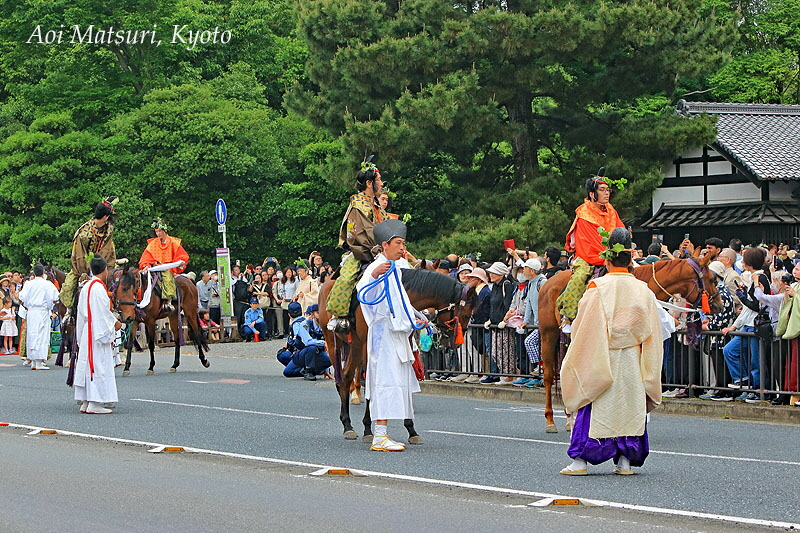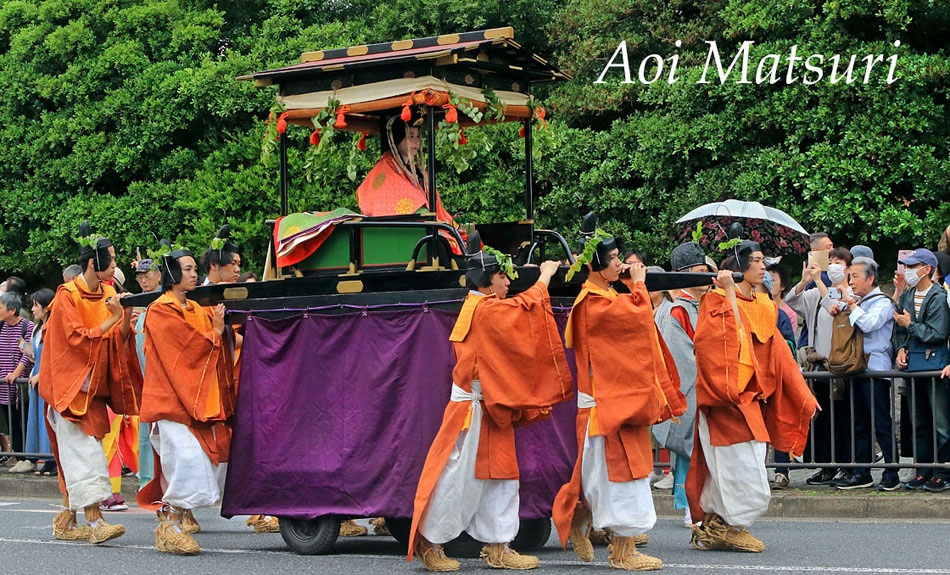
An indelible event in Kyoto’s history
It was the year 794 AD. It was the beginning of the Heian (peace) Period in Japan. The country was ruled by Kamnu, its 50th emperor. He was noted for establishing the capital city of Heian-Kyo (‘peace and tranquillity') - today known as the city of Kyoto. And for over one thousand years Kyoto remained the capital of Japan. During this period, the region was periodically struck by famine and pestilence. Both history and legend have it that emperors made sacrifices and gift offerings to plead with the angry gods who brought such destruction. Thus was the origins of the Aoi Matsuri procession.
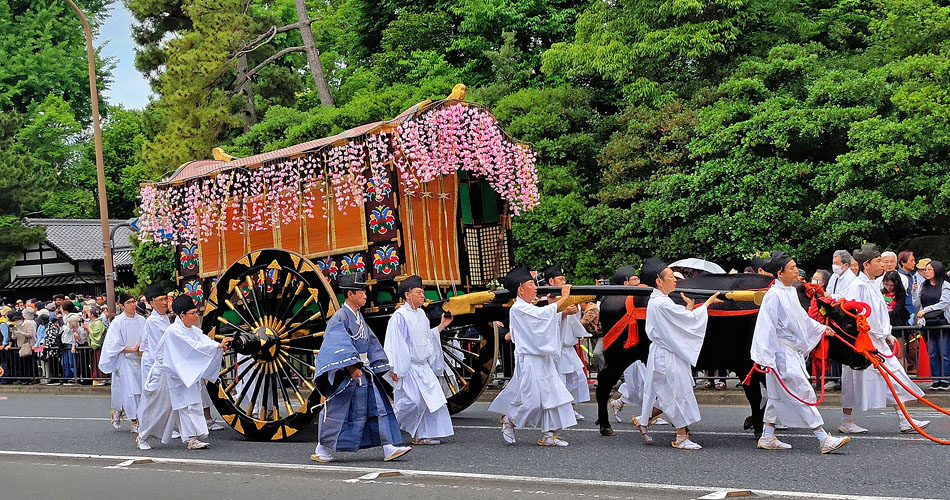
The emperor’s subjects performed these rituals as they paraded from the Imperial Palace to the shrines, in the belief that it would appease the gods. As a result, prosperity re-emerged. Whether legend or historical fact, it is clear the procession and its significance earned high regard and respect over the centuries.
Aoi Matsuri is also referred to as the Hollyhock Festival. The leaves of the flora were used (and are still today) to decorate shrines. During the procession, the Hollyhock leaves were also embodied on the imperial personnel, carriages and animals, which made a symbolic connection with the shrine.
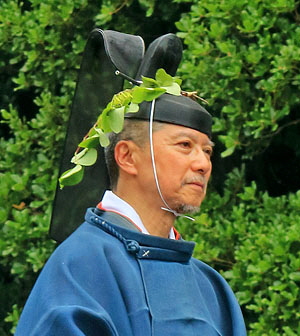
Hollyhock leaves attached to headgear
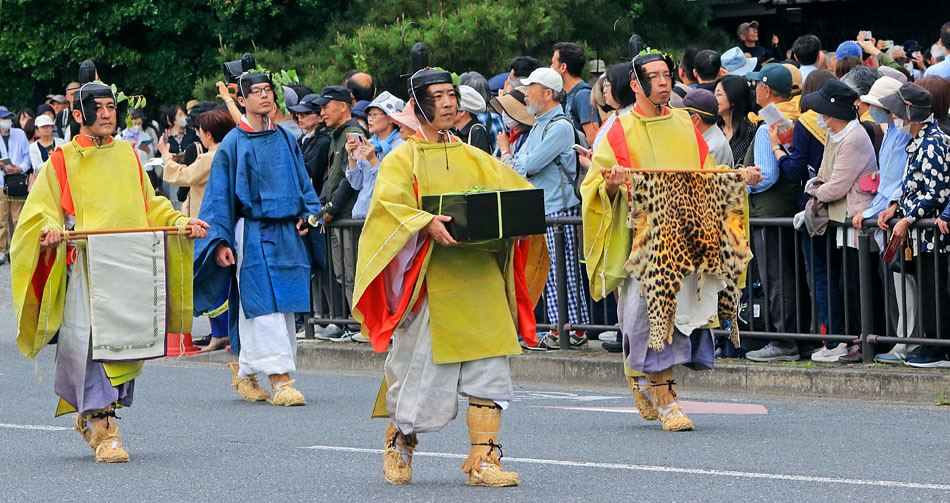
Carrying gift offerings to appease the angry gods
In modern times, every year, on the 15th of May, this ancient and grand festival has become one of Japan’s most important events.
And I was fortunate enough to witness part of the spectacle and get some memorable photos.
Currently, around 500 participants are selected to join in the parade. Adorned in that period’s attire and costumes of saturated colours, it has evolved more as a feast of elegant aristocratic pomp and pageantry. Starting from the Imperial Palace to Shimagamo Shrine it is a long 8 kilometre walk. There, offerings and prayers are held. It is furthermore a celebration as the city folk indulge in dance, and games and watch various activities such as archery competitions and horse racing.
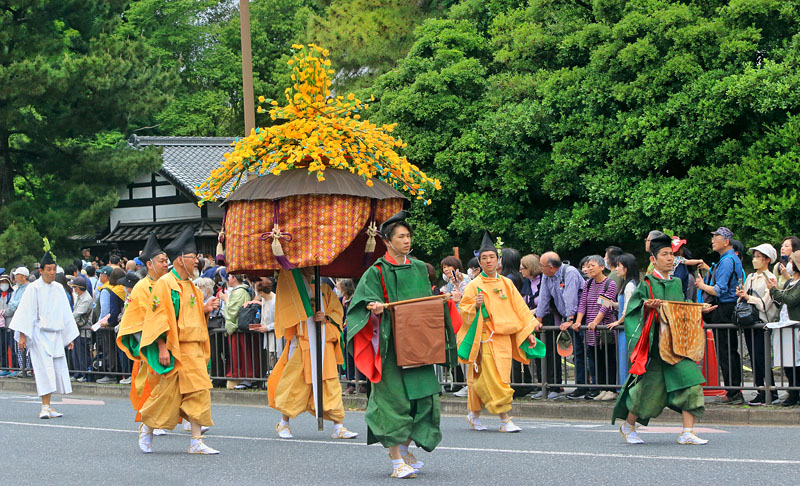
Hangasa - giant floral umbrella
The parade’s members include men and women on horseback, denoting various ranks according to what they are wearing. Notice the hollyhock leaves on the headgear of the participants. There are interpretations of the significance of various participants, their attire, and their position in royalty. Interspersed are decorative ox-drawn carts (Gissha), and men wearing giant floral umbrellas (Hanagasa).
Maibu - noble women
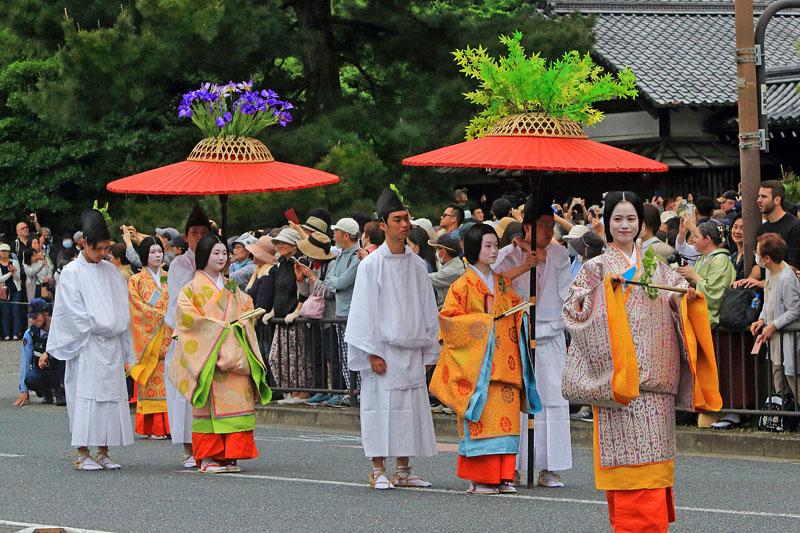
Another gorgeous sight is the large entourage of noble women (Myobu) and ladies in waiting (Uneme) in colourful kimonos. They accompany the years’ Saio - traditionally a young female imperial family member who is also the high priestess who performs rituals at the shrine. You can spot a Saio-Dai being carried in a palanquin borne on the shoulders of eight men. Nowadays an unmarried woman from a Kyoto elite family is chosen for the coveted privilege.
Saio- Dai
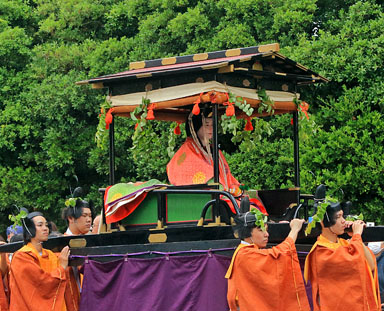
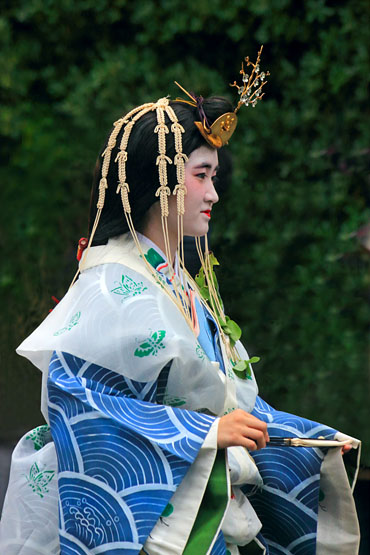
Uneme- lady in waiting
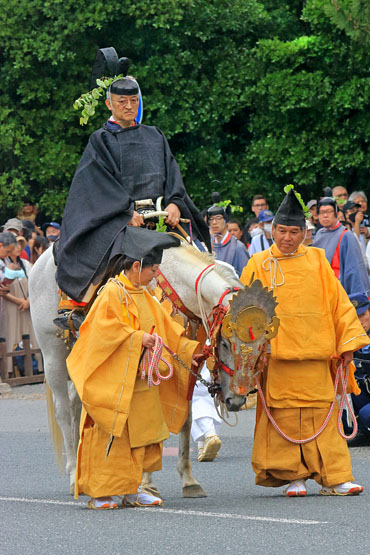
Imperial messenger

Uneme- lady in waiting
If you visit Kyoto in mid-May, you cannot afford to miss this event. I was informed that the best way to witness it is through ticketed seating. Unfortunately, that gets fully booked and well in advance. The procession began on time at 10.30 am. Nevertheless, arriving an hour prior to the start and positioning myself along the fenced-off main road, I had a perfect view. Even though the crowds did amass quite quickly, everyone was well disciplined and respectful, keeping to the boundary and affording everyone a good view. I did not follow the procession all the way to the shrines. Instead, I was quite content as it passed by upclose and enjoyed the atmosphere.
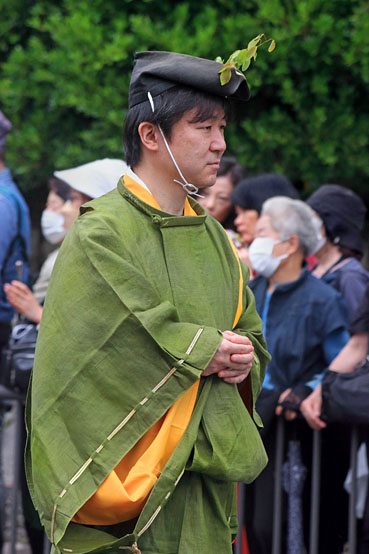

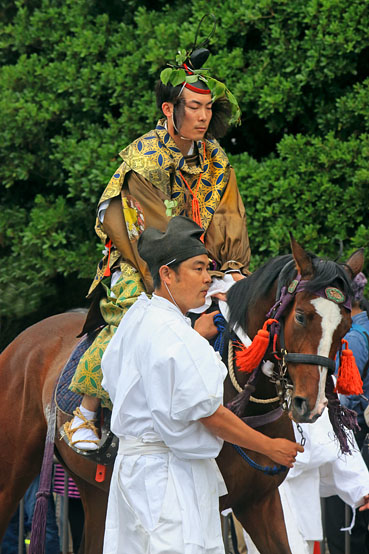
You don’t really need to distinguish the meaning of all that’s going on and what different costumes and objects carried by participants mean. For me, this was a delightful watch and a graceful procession that ushers you 1500 years back in time.
16 images here ©JAYTRAVELPHOTOS
© COPYRIGHT notice. The images on this site are for viewing only.
To purchase any, for personal or commercial use, please contact us at jaytravelphotos@aol.com
___________________________________________________________________________________________________________________________________________
